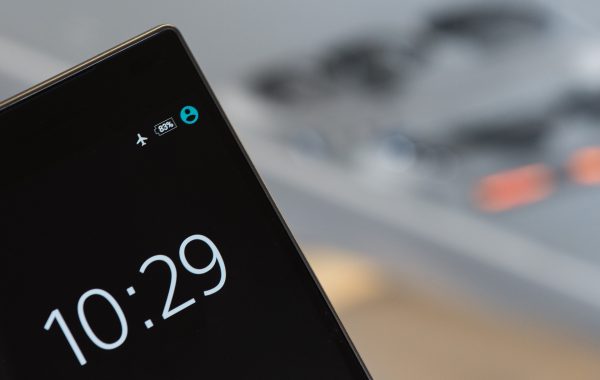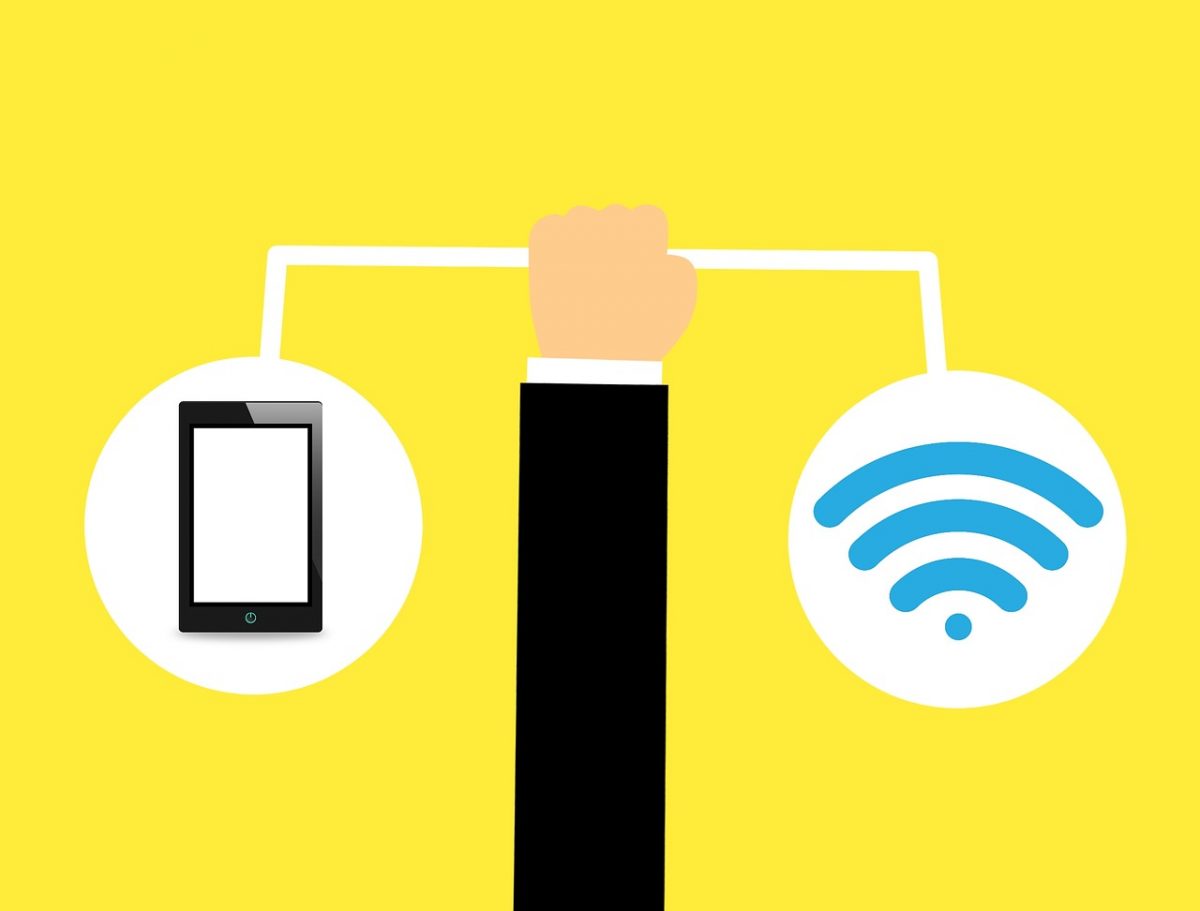Whenever you are out of the country for a vacation or a business trip, you want to post some selfies on your Instagram or tweet about your touchdown. There is public Wi-Fi at the airport for sure, but you find it hard to log in to their Wi-Fi. The good thing is, there is data roaming. You can use your phone’s mobile internet like you’d use it at home or at work. You may feel a little bit closer to your home because of this internet service.
In this article, we will know more about data roaming and how to use it effectively.
What Is Data Roaming?

First, we need to define roaming. The concept of roaming is pretty easy to understand. Roaming is a service that enables you to use the services of your carrier outside the coverage of your network. For example, if you want to call someone in the US and you are on a vacation abroad, you can use roaming to call that person. Your network will connect to a partner network in the country you’re staying in.
The same concept goes with data roaming. When your carrier network is not available in your current location, your device will connect to a partner carrier so you can browse the internet. But your network might have a choppy network reception, so you might want to check the network coverage with your carrier first. This way, you can avoid extra charges on your bill. When roaming, you wouldn’t need to rely heavily on public Wi-Fi since you are using your data plan. So now, you can still contact your loved ones and associates on your vacation, thanks to data roaming.
There are two kinds of data roaming: domestic and international roaming. Domestic roaming occurs when your carrier does not cover any area within the US, Puerto Rico, or the US Virgin Islands. Meanwhile, international roaming enables you to browse the internet anywhere in the world using your carrier’s services. Users typically activate international roaming, since most of the major carriers are covered in the US and its territories.
How Much Does Data Roaming Cost?
Different networks vary their charges on their customers. They usually charge per megabyte of data consumption. So you better watch your data consumption when using data roaming.
T-Mobile subscribers get 200 MB of data for domestic roaming. This applies to subscribers that onboarded from November 15, 2015, onwards. Subscribers prior to this date will need to check with T-Mobile for their data allowance. Essentials subscribers do not get any international data roaming, while Magenta and Magenta Plus subscribers have unlimited international roaming. However, you are only limited to 2G speeds. You might need to shell out more money if you want to get 4G speeds.

AT&T provides 100 MB of data allowance for domestic data roaming. They call this service “domestic off-network data use.” Once you get over the limit, you’ll be notified by AT&T. The network charges $2.05/MB for international data roaming. This is applicable for those who have not opted for any data roaming plans.
Verizon does not charge any fees for domestic data roaming. You will be charged for the monthly data allowance of your plan. When you are connected through data roaming, you will see an “Extended” notification on your phone. Double-check with Verizon if you are entitled to free domestic roaming. This feature may not be available on some older plans. International data roaming or “Pay As You Go” will cost you around $2.05/MB of browsing. Internet speeds will depend on the country.
Lastly, Sprint offers unlimited internet with 2G speeds. You don’t need to add up any plans with Sprint. Most of its plans already have Sprint’s Global Roaming in them. Availing of 4G speeds will cost you more. This applies both for domestic and international roaming.
How to Enable/Disable Data Roaming?
Enabling data roaming is as easy as 1-2-3. A piece of advice: before opening data roaming, notify your carrier first. With this, you can check and avail of roaming plans for your trip. Also, enabling data roaming within the United States will not incur additional charges to your plan, unless you are out of coverage of your carrier.
Enabling Data Roaming on Android
On Android devices, you can enable data roaming by going to Settings>Wireless & Networks>Data Roaming. Some phones will display a pop-up message that confirms, “Enable data roaming? This will incur additional charges!” Just tap Yes or OK if this message pops up. To disable this, just swipe the button of data roaming.
Enabling Data Roaming on iOS
On iOS devices, enable data roaming by going to Settings>Cellular>Data Roaming. Swipe the toggle to the right to enable this setting. To disable this, just toggle off this setting by swiping to the left.
Again, remember that data charges might pile up when this setting remains on. So, be mindful when you use data roaming, especially when you are traveling abroad.
How to Avoid Excessive Charges From Data Roaming?
As we already mentioned, some phones will notify you that data roaming can incur additional charges. It’s true—data roaming charges can give you a severe headache when you return home. You must reduce your data consumption on data roaming. This way, you won’t be surprised by your bill payment.
There are ways to reduce charges on your data roaming. These tips are pretty straightforward; thus. you can easily follow these tips we have for you.
1. Connect to Public Wi-Fi

When you want to access the internet abroad, you can search for public Wi-Fi places such as coffee shops, airports, parks, and the like. You will get decent internet speeds with most of the public Wi-Fi spots. However, as we have already mentioned, public Wi-Fi places can be a lair of sketchy people trying to snoop on your data. Better secure your phone with a virtual private network (VPN) when connecting to a public Wi-Fi. We have made a list of the top 15 VPNs you can use on your Android and iOS phones to secure your identity on the internet.
2. Turn off Data Roaming on Your Phone
We sometimes tend to be forgetful about the settings of our phones. Turning off data roaming, especially when you’re back home, can help you significantly reduce your data usage, thus reducing your internet expenses. You can also disable this if you do not need to connect to the internet.
3. Enable Airplane Mode
Still have fears that you are being charged by your carrier? Enable airplane mode on your phone. This way, you can be sure that no incoming or outgoing data will go through your device.
To enable this on your Android device, just swipe down your notifications panel and press “Airplane Mode.” On your iOS device, check this option by swiping up your Quick Controls menu and tapping on the airplane icon that indicates “Airplane Mode.”
4. Disable Cellular/Background Data for Apps

You might not know it, but apps you are not using upfront consume data. This is called “background data.” Having apps that run in the background will definitely consume your data allocation. Better turn off or limit their access to cellular data, especially when you enable data roaming.
To turn this off on Android devices, just go to Settings>Data usage>Cellular data usage. Tap the apps that you think consume most of your data. Then, toggle “restrict background data” on. Just tap “OK” if a popup message appears.
On iOS devices, go to Settings>General>Background App Refresh. We recommend to turn off background app refresh on all apps by switching the main button on. You can also turn off app refresh on individual apps by turning the toggle on with the apps. Alternatively, you can choose which essential apps can connect via cellular data by going to Settings>Cellular.
5. Regularly Monitor Your Data Usage
Monitoring your data usage is truly helpful in avoiding excessive data charges. It will help you monitor your daily internet habits. It also gives you an idea of how much data you have left with your roaming plan.
To see your data usage on iOS devices, just go to Settings>Cellular, then scroll down to see your data usage. On Android devices, go to Settings>Data usage. You can see a graph that lets you see your approximate data usage for a month. This will help you monitor how much data is left on your plan.
6. Get a Roaming Plan
We all hate being charged a couple of bucks for one megabyte of data. Most of our apps and internet services use more than this measly amount of data. So before you travel, ask your network for their roaming offers. Most of the major carriers today offer internet roaming plans. They even offer prepaid plans that you can pay and consume right after you activate roaming with your phone. Assess these internet plans according to your daily usage, so you won’t go over your data usage.
Best International and Data Roaming Plans
You do not want to be shocked by surprises with your bill. That is why you must plan ahead when you use data roaming. If you don’t want to pay hefty prices on your next billing, you can opt to avail of some add-ons on your plan. This way, you are aware of your data consumption with data roaming.
Here is a comprehensive list of the plans that have international and data roaming in it:
T-Mobile
| Name | Pricing | Data Roaming | Next Step |
|---|---|---|---|
|
Essentials
|
$26
/line |
None
|
|
|
Magenta
|
$35
/line |
2G data speeds
|
|
|
Magenta Plus
|
$43
/line |
2G at 2x data speeds
|
T-Mobile offers international roaming on its Essentials, Magenta, and Magenta Plus plans without any extra charges. Essentials offer unlimited international texting and international calls for $0.25/minute. This plan does not offer data roaming on it, though. So if you are looking to use your data abroad, you can choose between Magenta and Magenta Plus plans.
Just like the Essentials plan, the Magenta plan also offers unlimited texting and low-rate calling of up to $0.25/minute. It also offers unlimited 2G data consumption to 210+ countries at 128 kbps. Lastly, the Magenta Plus plan gives you unlimited texts and calls of up to $0.25/month. T-Mobile has doubled its data consumption speeds with 256 kbps of 2G connectivity for 210+ countries. If you are traveling to Mexico and Canada, you can use 4G on your data consumption. You are given up to 5 GB of data you can use to breeze through 4G LTE. After that, your speeds will be capped again to 2G.
As you can see, T-Mobile only offers unlimited 2G connectivity on its international data roaming. We may say that 2G is irrelevant in today’s Internet speed standards. That is why T-Mobile is offering an add-on called “International Pass” for its Magenta, Magenta Plus, ONE, Essentials, and Simple Choice subscribers. You can get 4G speeds with 512 MB of data for $5/day. You can use this data allocation for up to 24 hours. There is also a $35 plan which gives you 5 GB for 10 days and a $50 plan which has 15 GB for 30 days.
AT&T

AT&T has two international travel plans for its subscribers— the International Day Pass and the AT&T Passport. The International Day Pass is the best AT&T plan to choose if you are going out of the country. You get what you pay for your existing plan. Just add $10/day on your trip. If you have another line on your account, you can also get international roaming for just $5/day. To activate your International Day Pass, you just need to sign in to your myAT&T, inquire and add this to your existing AT&T plan. This roaming plan will be activated once you connect to data from your phone outside the US.
If you are traveling to Mexico and Canada, you do not need to worry about additional roaming charges. Most of AT&T plans include “Roam North America,” which can let you use your text, call, and data plan just like how you use it at home. It’s like using your phone at home while you’re in these countries.
For frequent travelers, the Passport Plan is the most suitable for them. It offers unlimited 2 GB of data for $70 or 6 GB for $140. AT&T also includes unlimited texting, $0.35/minute calls, and the widest coverage to over 200 countries. One-time payments can be made for this plan; you can also avail of recurring payments if you plan to stay longer on your trip.
Cruise travelers can also get a roaming plan for their trips. The AT&T Cruise Talk, Text, and Data will give you unlimited calls and texts and 200 MB data for 30 days. You can avail of this package for $100 for 30 days.
Verizon

Verizon offers a roaming service called TravelPass to its subscribers. You will be using your existing plan with them with an additional fee. Using your plan in Mexico or Canada will cost you $5/day of usage. In other countries, you will add $10/day on your roaming. What’s great about Verizon is that they offer unlimited LTE coverage in all 185 countries that have a 4G infrastructure. This brings a great advantage over its competitors. If you want to avail of this plan, you can go to their Trip Planner tool to assess the best options for your roaming needs.
If you are an occasional traveler, you can also avail of their Monthly International Travel Plans. Its $70 plan includes 100 minutes of calls, 100 text messages, and 0.5 GB of data allocation. Meanwhile, its $130 plan has 250 minutes of calls, 1000 text messages, and 2 GB of data. Once it is used up, you’ll be charged $0.35/minute for calls, $0.05/text sent, and $25/0.5 GB of data.
Roaming for cruise ships and airplanes is also available in Verizon. This will cost you $20/month for 50 MB of data that can be used while onboard selected ships and airplanes.
Sprint

Sprint’s Global Roaming gives roaming services to its subscribers in up to 200 countries. It offers unlimited texting and 2G data speed for roaming usage. They also have low call rates at $0.25/minute.
If you want to reach 4G speeds, you may opt to buy Sprint’s International High-Speed Data Pass. The price ranges from $5-$10 per day or $25-$50 per week on most destinations. In Canada or Mexico, you can buy this high-speed pass for $2/day or $10/week. Once this pass expires, you will revert back to 2G speeds.
To use data roaming on Sprint, just activate data roaming on your LTE-capable smartphone. Check with your Sprint plan first if it has Global Roaming in it. If it does not have any of it, Global Roaming is automatically included in your plan.
Final Word
Data roaming gives us the power to browse the internet anytime, anywhere. But it also drains our wallet bone dry if we don’t control ourselves on browsing. So take control of your internet browsing by limiting the times you open your internet on your phone. Plan out your data usage ahead and find balance on using the internet.
